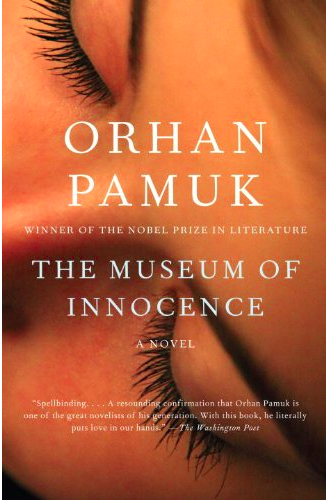
The Museum of Innocence
A disturbing tale of obsession masquerading as love
I walked away from this book feeling really disturbed — maybe even tricked. I expected an epic love story, as the museum and all the descriptions of the book seem to suggest. But instead, I was shocked to find a story about one man’s sickly obsession and possessiveness over the object of his acquisitive neurosis.
The poor girl — only 18 years old, 12 years his junior, and a naively trusting, impoverished cousin of his — had her dreams crushed, and her life slowly choked out of her over eight years of creepy, insistent visitations from this wealthy relation at her silent family table, where no one could be at ease.
The museum is not one of the beauty of love, but the twisted enshrinement of masculine predatory longing, the dark cave of a rich man who collects every lip-stained cigarette of his desired object, but knows nothing of her soul.
The scene of her violent death, a last desperate effort to escape his grasp, perhaps to try to kill him in a doomed race towards freedom — results sadly in killing herself instead.
“How sad and empty a life can be” — the protagonist remarked of another young woman, kept by his wealthy industrialist father, whose beautiful mistress also suffers a life tragically cut short. His father succeeded in keeping both a respectable wife at home and another young play thing in a hidden apartment, with false promises of marriage that starve her and deprive her of the kind of love and family life she could have had with someone else. She wastes away. The protagonist aspired to that kind of life his father led, the “ultimate bliss”, and was naively optimistic the whole way through the novel, believing his own bliss was just a few weeks or months away. Instead, he wastes decades in some kind of mental illness that he mis-labels love. More tragically, he steals/consumes the life of the object of his obsession, and murders her with his singular, all-monopolizing vampiricism — so-called love.
I walked away from the novel feeling violated, like too many hours of my own time was stolen from me by this creepy, self-glamorizing, dangerous man.
The novel succeeds as a kind of commentary on the unfairness of gender relations and social class in 1970s Turkish society, in which, as the author comments, the inequality of the sexes is so pervasive that perhaps love is simply not possible. At least not in the “modern” Western way. Young women are subject to sexual harassment walking down the street, to slut-shaming, repression, rape and victim blaming, their prized virginity as the ultimate form of sexual objectification, far more violent than the scandal of mini-skirts.
The protagonist is so self-absorbed that his first person narrative leaves little room for the character development of others. His lovely high society fiancé, Sibel, is a flat abstraction of a perfect lady, whom he also fails to understand or attribute any kind of complexity of soul. He takes little interest in other members of his family, and has no true friends, only acquaintances, other womanizing bachelors of his social class. His [love?]-sick affliction is at once mysterious and utterly boring.
The book drags on at an agonizing pace, and I could barely only finish it out of some sense of commitment — due to having enjoyed visiting the museum with my own fiancé. This trip to Istanbul was, for us, a symbol of our love. We didn’t understand the dark story behind this poetic building, and it became part of our own mythology as some kind of mistaken symbol for wild, adventurous, insistent romance. Since visiting the museum, we started collecting objects of our times together in similar memory boxes we create for one another, mementos of our times and culture. Having not yet read the book, we didn’t know that the actual romance in these pages is so one-sided, tragically unfair, and lethal.
Perhaps it’s time for us to find new symbols.
Pamuk painted a starkly clear image of the expectations of gender, sexuality, marriage, and social class in 1970’s Turkey. For that, the novel is successful, though not altogether enjoyable.